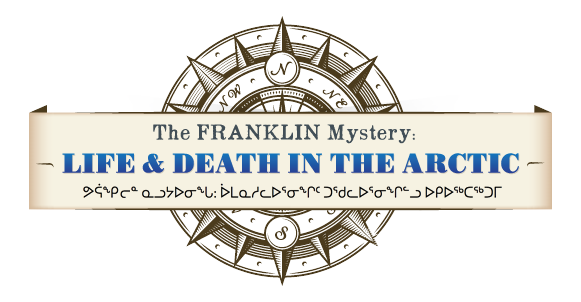Time after Time [Western and Inuit Time] (2014)
Historians are often concerned with time, especially tracking change over time. Yet, time itself is not a straightforward concept. Different societies have developed particular notions of time according to their varying economies, environments, and cultural imperatives. In this regard Western cultures developed a specific concept of time that they brought with them to the Arctic in the post-contact era. Their concept contrasted with very different notion of time as developed by Inuit over numerous generations.
For Inuit and their predecessors of the Thule culture time was measured according to natural cycles. The most basic measure was the placement of sun in its daily movements across the sky. Longer periods of time were measured according to lunar months and the movements of stars that Inuit learned to recognize as signals of seasonal changes. For example, in northwest Greenland in 1854, an Inuit man told an explorer that only when a certain star reached a point in the sky no higher than another star would it be the time to harness their dogs.
Space was similarly organized according to the repeatable processes of daily life. On the trail Inuit measured time space by the amount of time it took to travel between places, signified by the number of "sleeps" between camps. For example, in 1859, when Oonalee, a member of the Netsilingmiut of the Central Arctic, explained the distance between the place where Franklin's ships sank and their position on the Boothia Peninsula near King William Island, he described it as "8 sleeps." Longer journeys were marked by the number of moons' travel separating two places. Space was also relational rather than a fixed entity. It expanded or contracted in relation to weather and travelling conditions, which Inuit calibrated in determining where and how far to go on their journeys. Inuit learned to be alert and take advantage of signs of weather in the sky, the wind, the character of the snow and its contours, or all these and other signs in dynamic combination. They also stressed the keen observation of natural features that they committed to memory to establish bearings on the trail. These included distinctive landforms but also the shapes and contours of rocks and other seemingly unremarkable features. To supplement the reading of natural signs the Inuit also constructed their own distinctive geographical markers known as inuksuit, vertical stone structures erected as aids to travelling through their traditional territories.
Western cultures developed very different notions of time. In earlier agrarian periods of their development Europeans viewed time in relation to nature, such as the annual growing cycle. Later on, Western time developed into a linear concept governed by calendars, clocks and other mechanical timepieces and instruments. For populous, commercial and expansionist societies, time became abstracted from natural processes and increasingly regulated by the demands of the marketplace and bureaucracies. Western approaches to time are well illustrated by the daily regimen of tasks and activities assigned to crew members on Western voyages to the Arctic, such as the Modified Routine of Duty authored by Captain Horatio Austin of the HMS Resolute when leading a Franklin search expedition in 1850.
The linear quality of Western time was closely related to the expansionist character of Western culture. The reliance on linear time prompted important technological developments including the refinement of chronometers, sextants and astrolabs that were especially important to ocean navigation. Yet, these instruments could be imprecise, especially in polar regions in proximity to the North Magnetic Pole. When timepieces broke down or explorers found themselves unable to read them, they lacked the requisite understanding of the arctic environments in which they found themselves, which might have enabled them to recover their bearings.
The two cultures' different approaches to time and space were starkly illustrated by the contrasting types of stone monuments erected in their respective homelands. Inuit erected inuksuit or stone markers to guide them through lands of recurrent passage and land use, while British built stone monuments as symbols of the conquest of space. A prime example was Nelson's Column, in Trafalgar Square, which commemorated Admiral Horatio Nelson's defeat of the French at Trafalgar in 1805 and was immediately embraced as a symbol of Britain's capacity to extend its military and commercial dominance around the world.
Users of the Franklin Mystery web site are encouraged to consult the images of these very different stone monuments in the visual documents collection.


